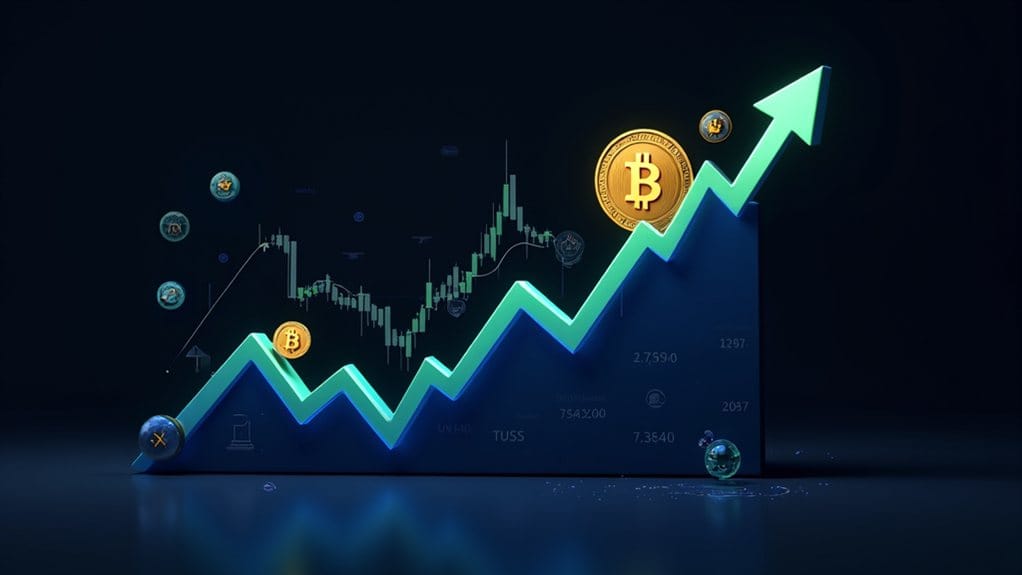As cryptocurrency markets continue to evolve, Avalanche (AVAX) has emerged as a formidable competitor to established blockchain giants Bitcoin and Ethereum. Launched in 2020 by Ava Labs, AVAX utilizes a unique Avalanche Consensus mechanism that blends elements of Proof-of-Stake, enabling impressive transaction speeds and scalability metrics that greatly outpace its predecessors.
Standard Chartered’s recent analysis positions AVAX to reach approximately $250 by 2029, representing considerable growth potential compared to both Bitcoin and Ethereum. This projection stems from AVAX’s technological advantages, including transaction finalization in 1-2 moments versus Bitcoin’s 10-minute processing time, and transaction fees averaging $0.01 compared to Ethereum’s variable costs that occasionally exceed $100 during network congestion.
AVAX’s path to $250 by 2029 leverages lightning-fast transactions and minimal fees, outmaneuvering crypto giants.
The scalability differential provides compelling evidence for Standard Chartered‘s bullish outlook, with AVAX processing up to 4,500 transactions per instant, dramatically surpassing Bitcoin’s 7 TPS and Ethereum’s 12-15 TPS capacity. This performance advantage translates to practical utility across decentralized finance applications, gaming platforms, and custom blockchain implementations. While AVAX focuses on speed, Polkadot’s Relay Chain design enables interoperability between different blockchains, providing a complementary approach to blockchain scaling.
Specific price milestones in Standard Chartered’s forecast include AVAX reaching $55 by 2025 and $100 by 2026, suggesting accelerating adoption rates. The bank predicts a remarkable 1,200% increase from AVAX’s current price of approximately $20. The bank’s analysis indicates declining BTC-to-AVAX and ETH-to-AVAX ratios over time, reflecting AVAX’s projected outperformance despite its currently smaller market capitalization and higher volatility profile.
The recent Etna upgrade has greatly reduced subnet launch costs, attracting developer migration from Ethereum Layer 2 solutions to AVAX’s ecosystem. The protocol’s custom blockchain capabilities allow developers to build tailored solutions that aren’t possible on more restrictive platforms. This technical improvement, coupled with AVAX’s EVM compatibility for cross-chain interoperability, positions the protocol advantageously for emerging real-world applications.
While Ethereum maintains a larger developer community and established ecosystem, AVAX’s technological efficiencies and strategic positioning for both DeFi applications and enterprise blockchain solutions provide compelling arguments for its long-term competitive potential. This supports Standard Chartered’s assessment of AVAX as an investment opportunity with considerable growth prospects through 2029.








